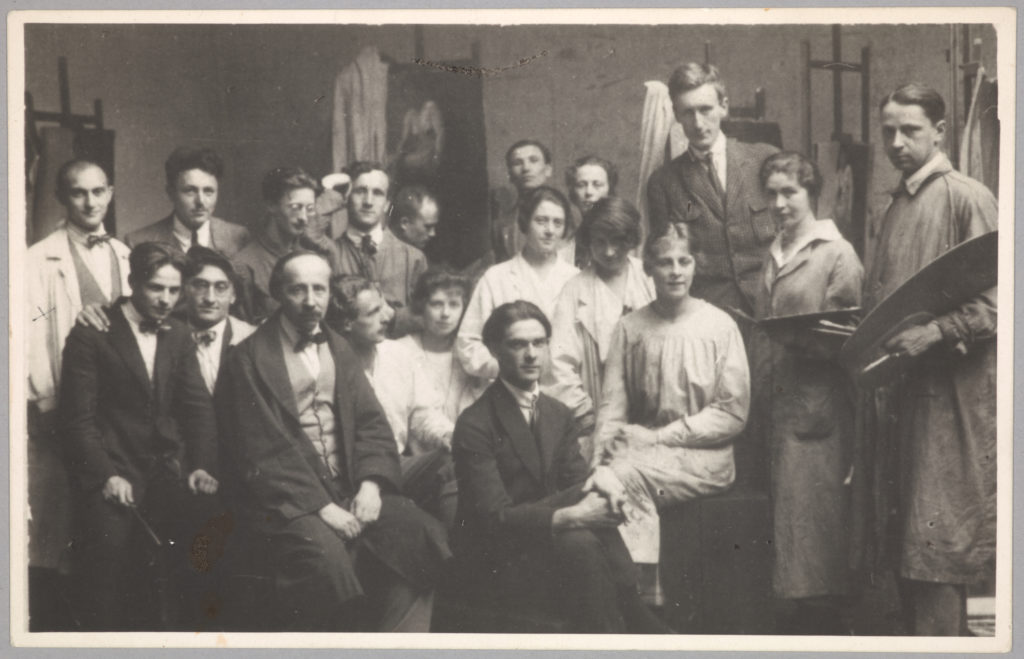“Hidden hands of admiration” – Józef Czapski as a painter of the everyday
Józef Czapski was almost two metres tall. Art critics noticed a specific perspective in his paintings. The painter himself explained in an interview that it was related to his height. “The resulting composition is the result of a tall person’s viewpoint”, he claimed. But is that really the only cause?
“Czapski was always fascinated by reflection, always fascinated by mirrors, panes of glass, open windows, glass door panels, and puddles on the asphalt. He was fascinated by everything that can be perceived as a motif in a painting, and in his paintings this is manifested almost obsessively,” wrote his friend Konstanty Jeleński.

He was fascinated by the metro as an anti-landscape. However, he was also very fond of painting distant views of rural landscapes, fields, sunsets – all of these were usually the results of stays in the French countryside (e.g., near the village of Sailly).
Konstanty Jeleński saw Czapsky as a precursor of Pop Art:
“Czapski began painting forty years before television, but he was one of the first painters who could see the potential richness, diversity, and variety of meaning in the forms of urban industrial civilization, which later became the domain of Pop Art. This is, of course, different from an old chair or van Gogh’s shoes, since “ugliness” of this type has had access to the realm of “Beauty” for a hundred years. Nor am I talking about neon signs, whose reflections in the wet asphalt can captivate even the most sophisticated and traditional aesthete. Moreover, Czapski’s interest in cinema posters, sewer pipes, tram interiors or the Paris metro has nothing to do with the distress that fought its way into the work of Grosz or Dix as a protest against social conditions. Czapski’s relationship to the kaleidoscope of industrial civilization is based – like that of the young representatives of Pop Art – on sheer fascination, and is often associated with humour.
Czapski’s painting is pioneering in relation to new figuration and pop art. Forty years ago, his paintings intimidated viewers with their vibrant colours and brutality of subject matter, his forms seeming to emerge from a passionate defeat […]
The construction of Czapski’s early paintings anticipates today’s advertising posters, the images on the covers of colourful magazines. Czapski intuitively sensed the possibilities that the camera lens would not popularize until much later, a bold new layout, a new construction that combines the precision of the film frame with the abstraction of the viewing angle. In Czapski’s earlier paintings, we encounter elements of architecture or decoration borrowed from Art Nouveau, or Modern Style.”
He found his “hidden hands of admiration” in backyards, in people in restaurants and bars, in the metro, on the street, captured in windows, during theatre and opera performances or on beaches – in short, in everyday life. Alongside this, still lifes whose main protagonists are objects of ordinary, everyday necessity, common and simple, such as bowls and rags. Then, landscapes from the countryside and the seashore, portraits, and self-portraits. “I wasn’t looking for any extra effect. I was fascinated by detail. I loved old faces,” Czapski claimed. This is the world in Józef Czapski’s paintings and drawings.
Texts by Elżbieta Skoczek